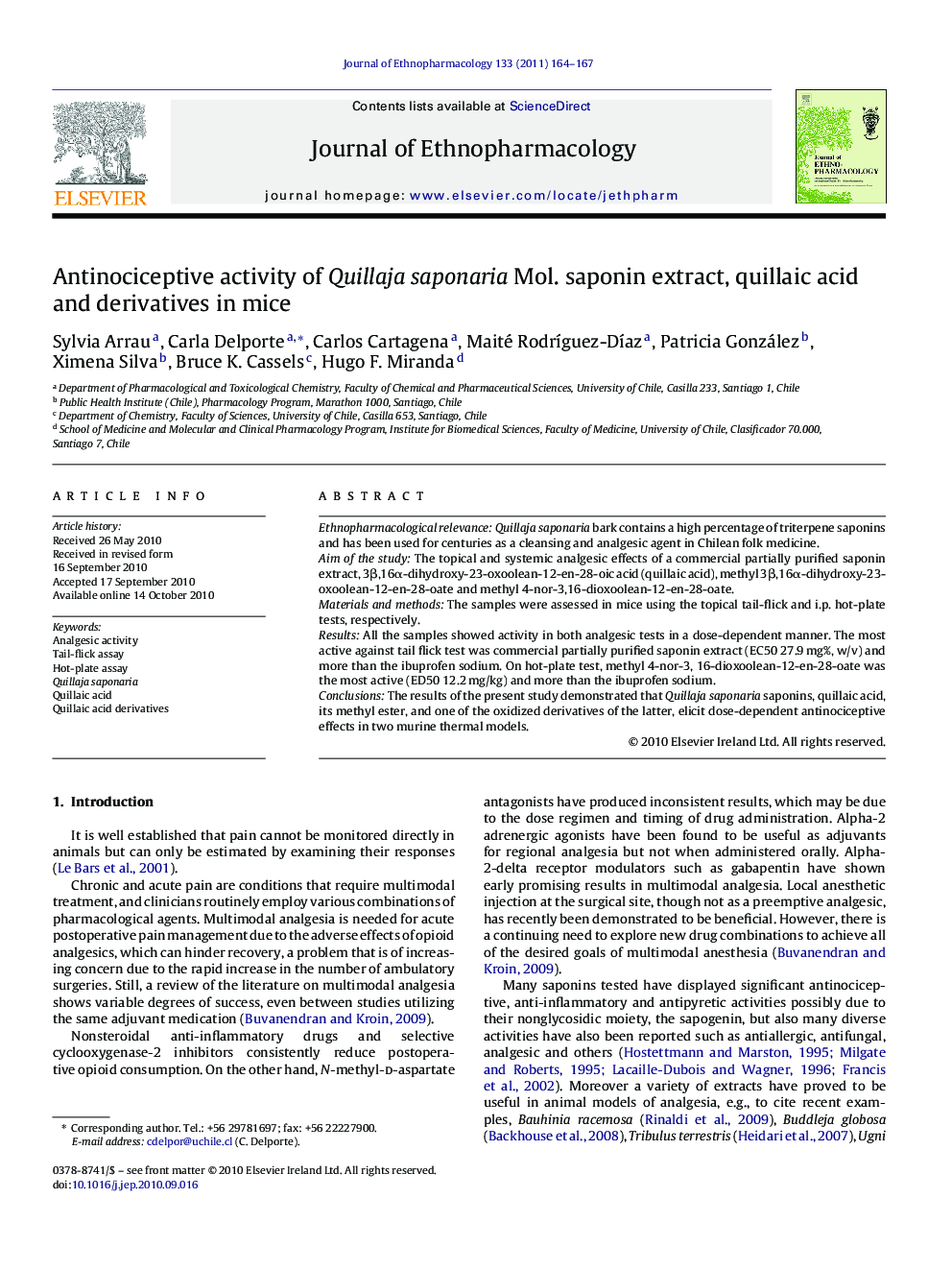| Article ID | Journal | Published Year | Pages | File Type |
|---|---|---|---|---|
| 2546048 | Journal of Ethnopharmacology | 2011 | 4 Pages |
Ethnopharmacological relevanceQuillaja saponaria bark contains a high percentage of triterpene saponins and has been used for centuries as a cleansing and analgesic agent in Chilean folk medicine.Aim of the studyThe topical and systemic analgesic effects of a commercial partially purified saponin extract, 3β,16α-dihydroxy-23-oxoolean-12-en-28-oic acid (quillaic acid), methyl 3β,16α-dihydroxy-23-oxoolean-12-en-28-oate and methyl 4-nor-3,16-dioxoolean-12-en-28-oate.Materials and methodsThe samples were assessed in mice using the topical tail-flick and i.p. hot-plate tests, respectively.ResultsAll the samples showed activity in both analgesic tests in a dose-dependent manner. The most active against tail flick test was commercial partially purified saponin extract (EC50 27.9 mg%, w/v) and more than the ibuprofen sodium. On hot-plate test, methyl 4-nor-3, 16-dioxoolean-12-en-28-oate was the most active (ED50 12.2 mg/kg) and more than the ibuprofen sodium.ConclusionsThe results of the present study demonstrated that Quillaja saponaria saponins, quillaic acid, its methyl ester, and one of the oxidized derivatives of the latter, elicit dose-dependent antinociceptive effects in two murine thermal models.
Graphical abstractAnalgesic effects of a commercial partially purified saponin extract, 3β,16α-dihydroxy-23-oxoolean-12-en-28-oic acid (quillaic acid), methyl 3β,16α-dihydroxy-23-oxoolean-12-en-28-oate and methyl 4-nor-3,16-dioxoolean-12-en-28-oate.Figure optionsDownload full-size imageDownload as PowerPoint slide
